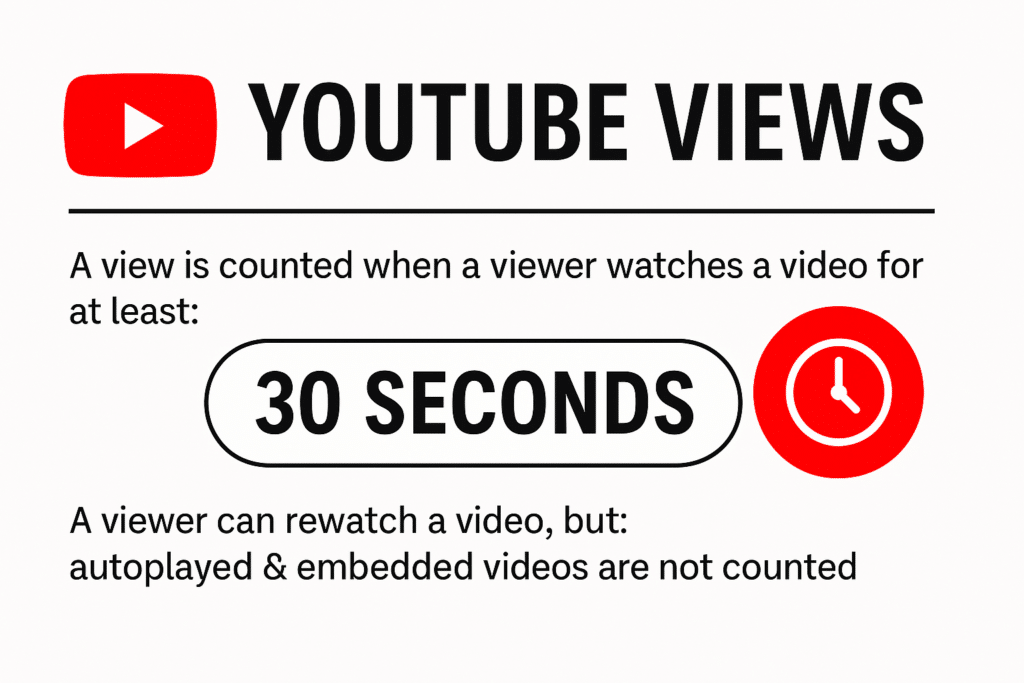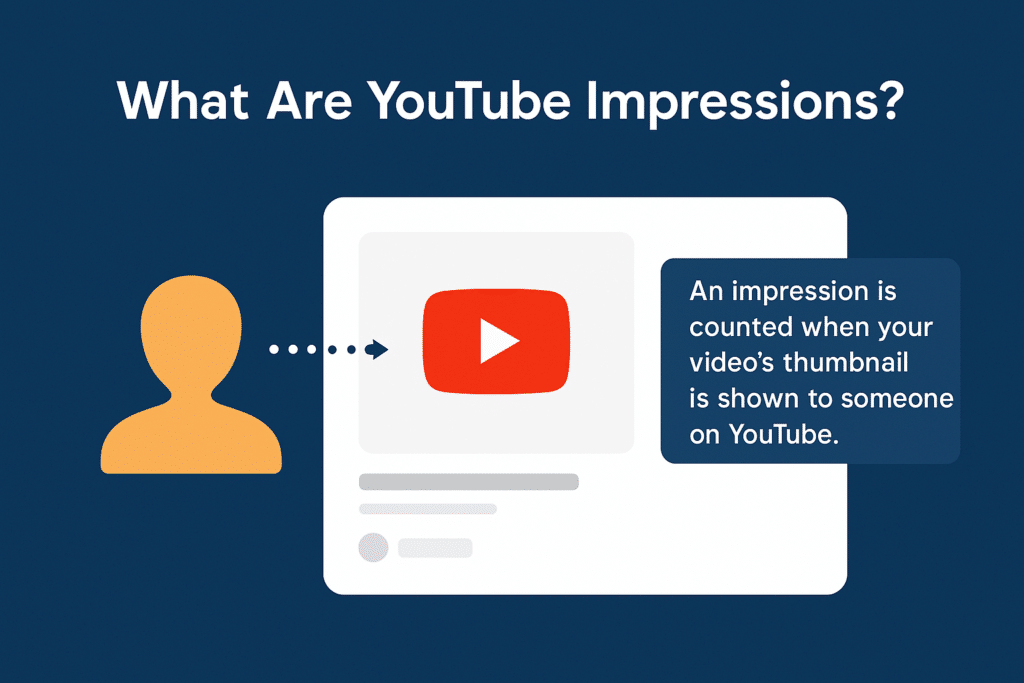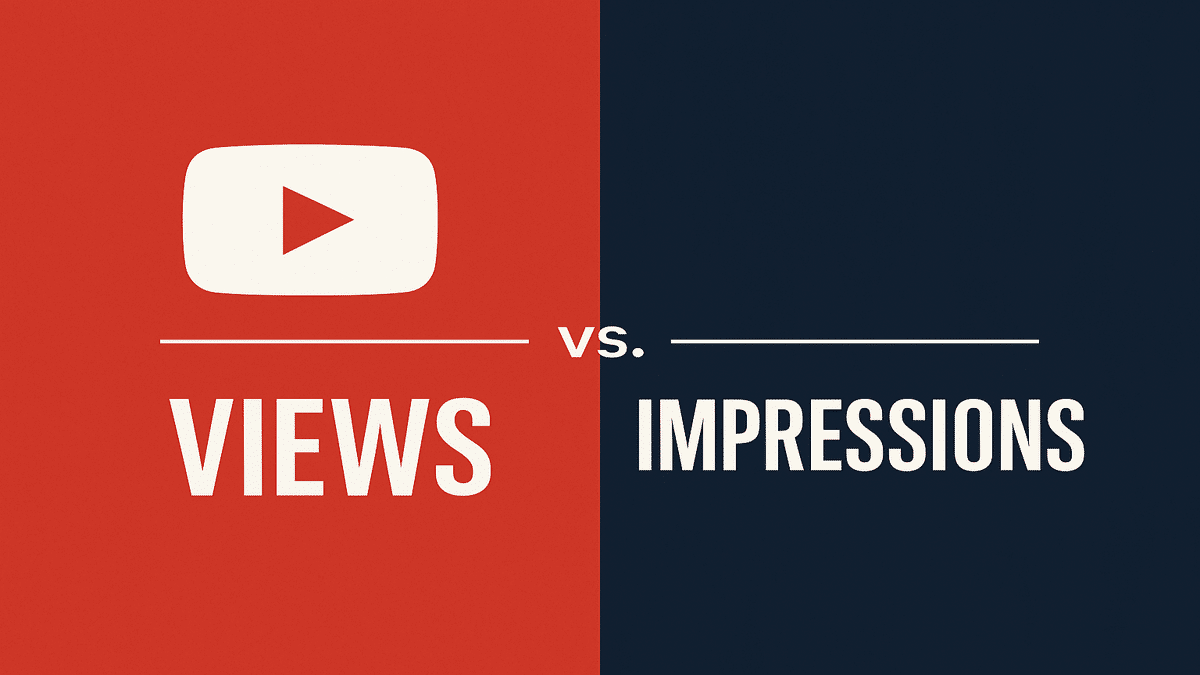If you’re trying to grow your YouTube channel or analyzing your latest video performance, you’ve probably come across two common metrics: views and impressions. While they might seem similar at first glance, they measure completely different things — and understanding the difference is essential if you want to succeed on the platform.
In this guide, we’ll break down what YouTube views and impressions really mean, how they affect your video’s performance, and why both metrics matter for your overall strategy.
What Are YouTube Views?
A view on YouTube is recorded when a user watches your video for at least 30 seconds. Whether someone clicks on your video from a search result, a recommended section, or an external site — as long as they stick around past that threshold, it counts as a view.

Views are a core engagement metric that tells you how many times your video has actually been watched — not just shown to someone. The more views your content receives, the more likely it is to be picked up by YouTube’s algorithm and recommended to others.
However, not all views are equal. A view where the user watches your full video or interacts with it (via likes, comments, or subscriptions) is more valuable than a quick 30-second skim.
What Are YouTube Impressions?
An impression is counted when your video’s thumbnail is shown to someone on YouTube. This could be in search results, the homepage, the sidebar, or suggested video sections.

Here’s the catch: impressions only count when your thumbnail is displayed on YouTube itself. If someone sees your video thumbnail embedded on another site or in an external app, that does not count as an impression.
Impressions are a visibility metric — they measure how many times your video was seen, not watched. Think of impressions as the number of people who could have clicked your video, while views represent the number of people who actually did.
The Role of Click-Through Rate (CTR)
Between impressions and views, there’s one more important number: the click-through rate (CTR). This metric tells you what percentage of people clicked your video after seeing the thumbnail.
CTR = (Views ÷ Impressions) x 100
For example, if your video got 10,000 impressions and 500 views from those impressions, your CTR would be 5%. A high CTR means your thumbnail and title are doing a great job convincing people to watch your content.
Improving CTR is one of the easiest ways to get more views without increasing your upload volume — just by optimizing your thumbnail design and video titles.
Which Metric Matters More?
Both views and impressions matter — but for different reasons:
- Views reflect how engaging your content is. They indicate that people are watching and (hopefully) staying for a meaningful amount of time.
- Impressions show your reach — how many people were presented with the opportunity to watch your video.
If you’re getting a lot of impressions but very few views, that’s a sign you might need to work on your thumbnail or title — or consider strategies to improve your video’s performance, such as buying YouTube views from reputable sources. This can give your content the initial momentum it needs to start ranking and reaching wider audiences.
How to Use This Data to Grow Your Channel
Understanding views and impressions helps you fine-tune your content strategy. Here’s how you can use both to your advantage:
- Low CTR? Rework your thumbnails and titles to be more clickable.
- High views but low watch time? Focus on better content structure or improve your hook in the first 15 seconds.
- Low impressions? Experiment with better SEO: use stronger keywords, tags, and descriptions.
Once you start analyzing your videos with these metrics in mind, you’ll spot opportunities to grow faster and smarter.
Final Thoughts
YouTube views and impressions are often misunderstood — but now that you know the difference, you can use both to guide your content decisions. While impressions show how visible your content is, views prove that people are interested enough to engage.
The key to success? Create high-quality videos, optimize your titles and thumbnails, and track both metrics closely. Over time, this data-driven approach will help your channel stand out and grow more consistently.

